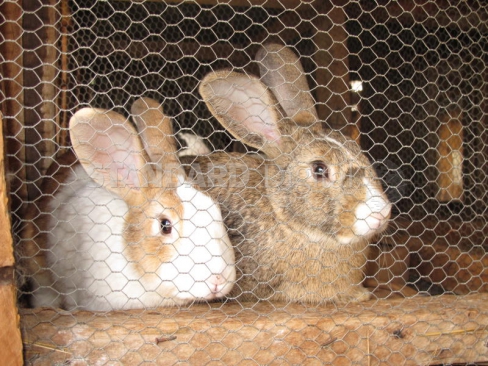
NAIROBI: Growing up in rural areas gave us opportunity to practise farming at an early age. As boys, keeping rabbits was one of our favourite hobbies. One rabbit could be bought at between Sh10 to Sh30.
The rabbits were kept as pets but sometimes could pass as a delicacy without any inspection by a vet posing risk of zoonotic disease infection.
The growing human population has led to increase in demand for animal protein traditionally supplied by cattle, but the demand cannot be met. This is one of the factors that has contributed to the commercialisation of rabbit meat.
HYGIENE KEY
Today rabbit meat can be found in leading supermarkets and hotels in Kenya. Other factors that have led to an increase in rabbit meat production include:
1. Rabbit farming requires small piece of land as compared to other animals. The farming can be done at the backyard of any residential area.
2. Rabbit requires less food and has a higher food conversion rates than other animals.
Rabbit is able to produce six pounds of meat as compared to one pound of meat from cattle when given the same quantity of food.
3. Rabbit houses are always raised from the ground reducing the risk of contamination with soil micro-organisms making rabbit meat to be one of the most clean meat and with less diseases.
4. Rabbit meat has less cholesterol hence suitable for people with heart diseases and the old.
5. The by-products, fur, manure and urine are all important in production of coats, organic farming and insecticides respectively.
Given the above advantages, it is evident that rabbit farming is the way to go — it has the potential to feed the increasing population with less initial investment.
But like other animal production systems, care should be taken when handling the animals to avoid contracting zoonotic diseases and other health problems associated with rabbit meat.
Although the risk of infection is low among the healthy individuals, chronic illness, immunodeficiency and pregnancy will increase the risk of acquiring these diseases.
Stay informed. Subscribe to our newsletter
The conditions that can be acquired from rabbit include:
1. Tularemia (rabbit fever)
Tularemia is a bacterial zoonotic disease that affects skin, eyes, lymph nodes and lungs of mammals. It can spread to humans though insect bites, rabbit scratches, direct contact with infected animals or tissues or eating contaminated food.
The disease is highly contagious and fatal and has a potential of being used as a bioterrorism agent hence a notifiable diseases in many countries.
Clinical signs in humans includes: fever, chills, headache, eye pain, sensitivity to light, swollen eyes and discharge, throat pain, mouth ulcers, vomiting, diarrhoea, inflamed tonsils, dry cough, chest pains difficulty in breathing and pneumonia. The signs will depend on the route of infection.
2. Allergy
People can develop allergic asthma and rhinitis leading to severe respiratory conditions when exposed to a glycoprotein in rabbit fur and saliva.
Humans can also be allergic to the feeds fed to the rabbits.
3. Pasteurellosis
This is a bacterial disease that can pass from rabbits to humans causing respiratory infections.
4. Dermatophytosis
A fungal skin infection in humans characterised by well defined areas of red, raised and itchy skin which is lighter at the centre forming a ‘ring’.
A transmission occurs by direct contact by skin or fur of an infected animal. It causes hair loss and scaly skin.
Fleas, ticks and lice can also be transmitted from rabbits to humans by close contact or handling infected rabbit bedding.
In every activity, there is no zero risk and it is always easier to prevent than to treat diseases.
RECOGNISING ILLNESS IN RABBITS
The common signs to look out for include: decreased appetite, bloating, changes in colour and consistency of feaces, increased salivation and dysuria.
The risk of diseases can be reduced by proper handling of rabbits, good management and routine health care by your vet.
The writer runs One Health Centre that disseminates info on zoonotic diseases
 The Standard Group Plc is a
multi-media organization with investments in media platforms spanning newspaper
print operations, television, radio broadcasting, digital and online services. The
Standard Group is recognized as a leading multi-media house in Kenya with a key
influence in matters of national and international interest.
The Standard Group Plc is a
multi-media organization with investments in media platforms spanning newspaper
print operations, television, radio broadcasting, digital and online services. The
Standard Group is recognized as a leading multi-media house in Kenya with a key
influence in matters of national and international interest.
 The Standard Group Plc is a
multi-media organization with investments in media platforms spanning newspaper
print operations, television, radio broadcasting, digital and online services. The
Standard Group is recognized as a leading multi-media house in Kenya with a key
influence in matters of national and international interest.
The Standard Group Plc is a
multi-media organization with investments in media platforms spanning newspaper
print operations, television, radio broadcasting, digital and online services. The
Standard Group is recognized as a leading multi-media house in Kenya with a key
influence in matters of national and international interest.










